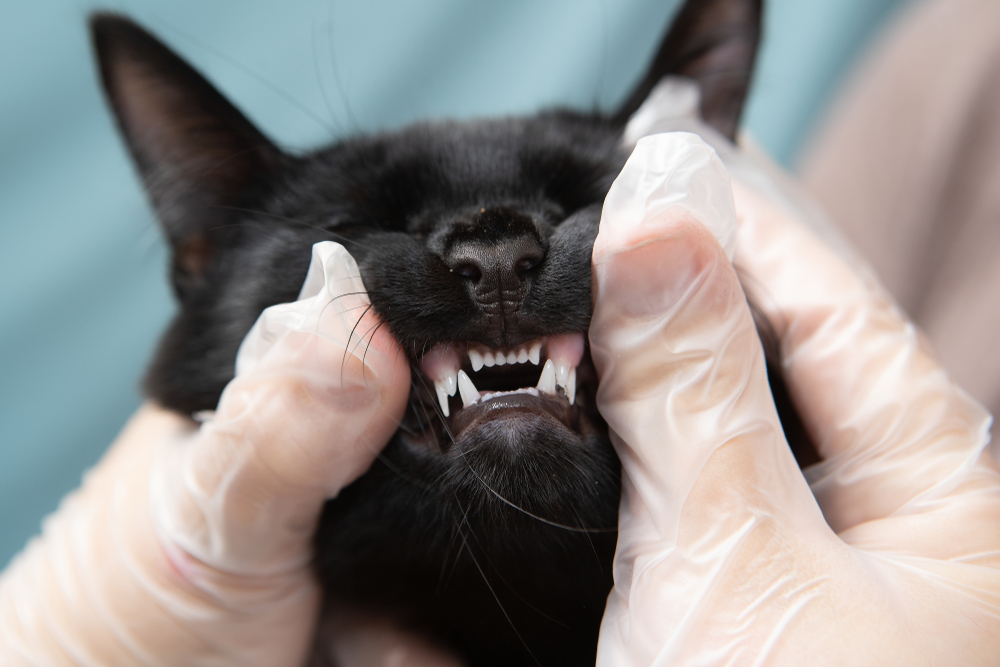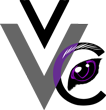Every so often, a dog or cat comes into our office with a bulging, red eye, and their owner’s concerns about glaucoma, tumors, or other generally bad problems. Then, our Veterinary Vision Center team completes their exam, and lets the pet owner know that the eye, in fact, is totally normal. How can this be? Pets may develop swelling behind the eye (i.e., the retrobulbar space) that pushes the eye forward, and causes an abnormal appearance (i.e., exophthalmia). Causes are unrelated to the eye, and may be rooted in a dental health issue. In light of February being National Pet Dental Health Month, here is a quick guide to bring awareness to this more-common-than-you-think problem.
What is a pet retrobulbar abscess?
A retrobulbar abscess is an infection that occurs in the space behind or around the eye. Inflammatory debris—commonly known as “pus”—builds up, the swelling pushes the eye out of place, and the eye becomes swollen and red. Sometimes an inflammatory process or foreign object migration causes swelling without infection or debris. Without infection, the condition is called retrobulbar cellulitis, but both conditions present with similar signs and are treated similarly. While a retrobulbar abscess appears to be an eye problem, the eye itself is usually normal.
What causes a pet retrobulbar abscess?
Most commonly, an abscess forms because of infection in a nearby structure like a tooth root or nasal passage. Dogs and cats have an “incomplete” orbit or eye socket, meaning that bone surrounds the eye on only three out of four sides. The bottom portion is lined only with soft tissue, so infection and foreign objects can penetrate from the roof of the mouth. Pets with an infection or abscess in their upper molar teeth, which can occur after a tooth fracture or with advanced dental disease, can develop an adjacent retrobulbar abscess. Pets who chew hard or foreign objects, or sticks, are at risk for developing retrobulbar cellulitis or abscess simply from the excessive chewing, or from foreign material migration into the orbit.
How is a pet retrobulbar abscess diagnosed?
If you notice swelling around your pet’s eyes, a red eye, or pain when they open their jaw, or chew, call your veterinarian right away. Your veterinarian will ask you questions to narrow down the possible diagnoses, examine the eye area closely, and examine your pet’s mouth. If your pet is experiencing pain, sedation may be needed for the oral exam.
A thorough eye exam is necessary to rule out a problem with the eye itself, and will include tonometry to check the intraocular pressure and rule out glaucoma, and fluorescein staining to check for ulcers, if your pet cannot close their eyelids completely. The eye is usually normal, but medication, such as a lubricating ointment, can protect the eye from the elements.
Testing for retrobulbar abscesses includes culture and sensitivity to allow selection of the proper antibiotics, and ultrasound, CT, or MRI imaging for patients who aren’t responding to therapy as expected, to rule out other problems like a tumor, or if a diagnosis is unclear.
How is a pet retrobulbar abscess treated?
Most patients respond well to oral antibiotics and anti-inflammatories. Your veterinarian may also sedate or anesthetize your pet, to create a hole in the roof of the mouth, and allow debris to drain from the orbit. If a tooth root is the suspected cause, dental X-rays, cleaning, and extraction of the offending tooth is required.
Sometimes, swelling and inflammation recurs after treatment, and medications or procedures may need repeating. In rare cases, when treatment is not working, or a foreign body is strongly suspected, pets may be referred to a veterinary ophthalmologist or surgeon, to explore surgery of the orbit, with or without eye removal.
How can I prevent a retrobulbar abscess in my pet?

Depending on the cause, prevention may or may not be possible. Keeping up with good oral hygiene and regular dental exams will help you identify any fractured teeth that could lead to an infection or abscess. Don’t allow your dog to chew on sticks, mulch, or plant material that could migrate through the mouth into the orbit. If you notice any infection signs in or around the eyes, nose, or mouth, set up an appointment with your veterinarian to take care of the problem, before an abscess can develop.
Retrobulbar swelling, abscesses, and cellulitis are common in dogs and cats for a variety of reasons, but can be difficult to distinguish from other orbit and eye conditions. Your Veterinary Vision Center team can help! Call us to schedule an appointment if you notice any swelling, redness, or changes to your pet’s eyes, or if you have any other questions regarding your pet’s ophthalmic care.







Leave A Comment